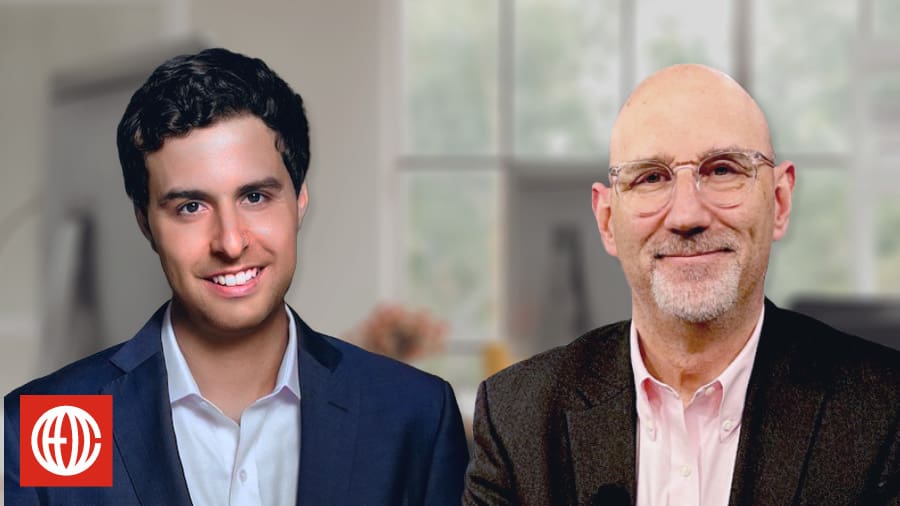
Guest: CEO Coaching International’s Mike Marchi. In his 30 years of C-Suite experience, Mike has dramatically improved the operational performance of a variety of companies and delivered sizeable growth. Mike has had full P&L responsibility for companies ranging from $75 million to $2 billion in revenue, and he’s held CEO and President roles in public, private equity, and family-owned, privately-held global corporations, including General Electric during the Jack Welch era, Citibank, Kohler, American Standard, and Grohe.
Episode in a Tweet: Good CEOs don’t delegate their company’s branding, they own it.
Quick Background: Branding has never been more important to successful businesses. The number of choices that your customers have multiplies every single day. Companies with strong brands are able to stand out from that crowd and make clear, direct value propositions to the public. Companies with weak, or worse, inauthentic brands are never going to separate themselves and will just get swept away in the non-stop marketing din buzzing across our screens every day.
On today’s show, Mike Marchi discusses how building and maintaining a strong brand can lead to higher profits for your company. He also shares some key lessons on leadership he learned from working under Jack Welch.
Key Insights on Effective Branding from Mike Marchi
1. Don’t delegate.
Before your company had a logo, or even a name, it had a vision. Your vision. The story you wanted to tell employees and customers alike. You, as CEO, have to be every bit involved in how that story is told as you were in coming up with it in the first place.
“Brand is established at the senior-most levels in the organization,” Mike says. “It’s with the CEO and his or her top team. It’s not something that you just relegate to your marketing department.”
Some CEOs will come to the big job with a creative or marketing background. But if you consider yourself more of a numbers or operations CEO, that’s still no excuse for passing the buck on this top priority. Yes, hire the best marketing people you can find. Yes, let them work. But work WITH them closely so that your vision and your voice still ring true in the final branding.
2. Identify what makes you unique.
“Every company has an image,” Mike says, “but not every company has a strong brand that consumers gravitate to.”
What’s the difference? According to Mike, it’s your company’s ability to express what makes it unique in the marketplace.
“It’s that unique customer proposition,” he says. “What do you want to convey to the consumer about your product or service that’s different or unique? And why they might want to come to you versus others in the marketplace. What value are you bringing? What kind of emotional connection? What kind of deeper experience? What are you bringing that gets your product to command a premium price and create a stronger customer following or loyalty?”
A focus on innovation might be key to your branding. You might position yourself so far out on the cutting edge that customers trust you to tell them what’s next. Strong luxury brands broadcast high quality and fine living. If you’re more service-oriented, you might hang your hat on being the fastest and most efficient at doing what you do. Or customers might recognize that you’ve mastered one BIG product or service so thoroughly that they think you’re the only game in town.
3. Seek outside inspiration.
Steve Jobs famously took a calligraphy class that had a profound impact on how he designed typefaces and fonts for the Mac. Likewise, Mike says that CEOs need to be on the lookout for fresh sources of inspiration, especially if your branding is going to emphasize design and innovation.

“The best innovation I’ve seen comes actually outside of the industry that you’re in,” Mike says. “Fashion is one of them, and I will say many times Europe seems to be leading in some of those areas in design. In technology, I’ve seen innovation come from the military, oil and gas. Industries that you would not expect to come into a consumer product, but they found a unique technology or a unique way to do something, and then you are able to incorporate that into your product.”
The more voracious your appetite for learning, the fresher and more attractive your company’s palette is going to be. We try to generate just that kind of wide-ranging dialogue with our annual CEO Coaching Summits. Mike also recommends dedicating a development team to doing some regular “on the ground” research and reporting key trends to you.
4. You get (back) what you pay for.
Zero-based budgeting has been a trendy philosophy for companies trying to maintain fiscal discipline as they pursue growth. And while it’s always important to analyze how your expenditures do or don’t translate into profit, Mike believes holding your marketing budget accountable for instant returns misses the whole point of strong branding.
“I believe there is an ROI in every investment you make in brand,” Mike says. “The issue is, it’s a longer-term play. And you have to believe that by making those investments now, the payout will come in the long term. I ran a business during the economic recession in the United States. We kept a significant amount of investment in driving the brand, both in new product development and in innovation, and also in brand advertising to the consumer, whether it was internet, TV, or print media. And we also kept a key focus on driving new product development and innovation. And we were able to keep the company profitable, where a lot of our competitors were not profitable during that timeframe. And we also were able to take a significant amount of market share away from our competitors.”
Ultimately, the quality of your brand isn’t going to show up on your balance sheet. That’s because a good brand is truly priceless. Promoting that brand isn’t just an investment in your company, it’s an investment in customers and prospects who will want to be a part of your story, and whose loyalty is going to be key to making BIG happen for your company.
Top Takeaways
- You are driving your brand. CEOs should work with top marketers, but they shouldn’t delegate responsibility for such a critical part of the business.
- You are unique. If your branding doesn’t explain why, it’s never going to grab customers’ attention.
- You are curious. Follow your outside interests to new ideas that you can incorporate into your company’s branding.
About CEO Coaching International
CEO Coaching International works with CEOs and their leadership teams to achieve extraordinary results quarter after quarter, year after year. Known globally for its success in coaching growth-focused entrepreneurs to meaningful exits, the firm has coached more than 1,500+ CEOs and entrepreneurs across 100+ industries and 60 countries. Its coaches—former CEOs, presidents, and executives—have led businesses ranging from startups to over $10 billion, driving double-digit sales and profit growth, many culminating in eight, nine, or ten-figure exits.
Companies that have worked with CEO Coaching International for two years or more have achieved an average revenue CAGR of 25.9%, nearly 3X the U.S. average, and an average EBITDA CAGR of 39.2%, more than 4X the national benchmark.
Discover how coaching can transform your leadership journey at ceocoachinginternational.com.
Learn more about executive coaching | Meet our world-class coaches








